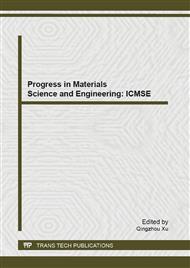p.179
p.183
p.187
p.195
p.201
p.205
p.212
p.216
p.221
The Effect of Sequence Structure of Polyisoprene on its Crystallization and Reinforcement
Abstract:
soprene can be polymerized into three types of isomeric units, cis-1, 4, trans-1, 4 and 3, 4-units. Dyad or triad sequences of these units were investigated by 13C-NMR, which the signals are assigned for the sequences as well as the special linkages, head-to-head and head-to-tail structures. The crystallization ability of polyisoprene was mainly dependent on these sequence structures and was studied in this paper, including cold crystallization and stress-induced crystallization. As a result, the samples with regular sequence structure had better crystallized ability which will be as the guidance for the polymerization.
Info:
Periodical:
Pages:
201-204
Citation:
Online since:
October 2013
Authors:
Keywords:
Price:
Сopyright:
© 2013 Trans Tech Publications Ltd. All Rights Reserved
Share:
Citation:


